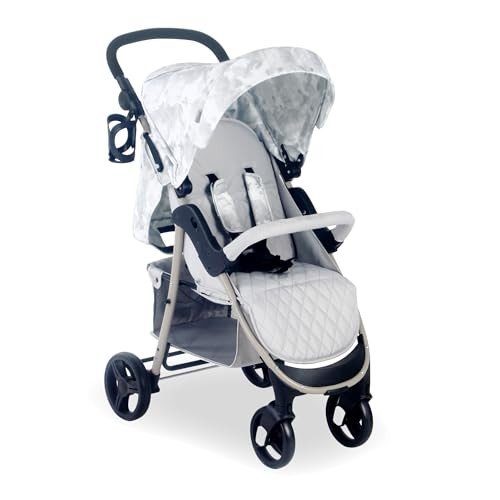Understanding Prams and Pushchairs: A Comprehensive Guide
When going into the world of parenthood, among the most crucial decisions to make involves picking the best devices for transporting a newborn or toddler. Among the top competitors for this purpose are prams and pushchairs. Both serve the fundamental function of helping moms and dads and caretakers carry their children easily, however they have unique functions, advantages, and use cases that set them apart. This article aims to check out prams and pushchairs thorough, guiding potential buyers through their important differences, advantages, and functions, and attending to regularly asked concerns.
What is a Pram?
A pram, short for "perambulator," is a kind of car designed specifically for babies. It features a completely reclining seat or bassinet, so a baby can lie flat while being transported. This is particularly essential for newborns whose spinal columns are still developing. Prams often have bigger wheels, supplying a smoother ride on different surfaces.
Secret Features of Prams:
- Fully Reclining Seat: Allowing infants to lie flat.
- Bassinet Design: Some designs feature a removable bassinet.
- Spacious Interior: Adequate area for the child to move easily.
- Robust Frame: Designed to be more steady, preferably matched for city and rural locations.
Benefits of Prams:
- Comfort: Provide a cozy area for the baby.
- Flexibility: Many can be converted to a pushchair as the child grows.
- Stability: Larger wheels and frames offer greater stability, specifically on unequal surface.
What is a Pushchair?
A pushchair is a light-weight option typically used for toddlers. Unlike Get the facts , pushchairs usually include a seat that can sit upright and might not use a fully reclining option, making them ideal for older babies who can support their heads and necks. Many contemporary pushchairs come with numerous functions tailored towards benefit for the parent and comfort for the kid.
Key Features of Pushchairs:
- Multi-position Seats: Can accommodate sitting upright or reclining choices.
- Lightweight Design: Easier to carry and navigate.
- Foldable Framework: Often fold up compactly for simple storage and transport.
- Larger Storage Baskets: Convenient for carrying baby essentials.
Advantages of Pushchairs:
- Lightweight and Portability: Easy to transport and store.
- Steerability: Smaller wheels permit sharper turns.
- Availability: Easier access to older young children.
Key Differences Between Prams and Pushchairs
| Function | Pram | Pushchair |
|---|---|---|
| Age Recommendation | Newborn to 6 months | 6 months to 4 years |
| Seat Position | Totally reclined | Multi-position |
| Weight | Much heavier | Lightweight |
| Terrain Usage | Ideal for all terrains | Best for city/urban environments |
| Size | Larger, bulkier | Compact, easy to fold |
Selecting the Right Option for Your Needs
The choice to pick in between a pram and a pushchair mostly depends on your specific lifestyle and your child's age. Here is a breakdown of factors to consider to assist limit the choices:
Considerations for Prams:
- If you reside in a rural location with rough terrain, a sturdy pram might be more appropriate.
- If you prepare to use it for long walks or trips, the convenience of a pram can be beneficial.
- Perfect for parents who want a model that will conveniently support a newborn.
Considerations for Pushchairs:
- If you require something light-weight for city living or public transportation, a pushchair might be a much better fit.
- For parents who desire a versatile choice for young children with various position settings.
- If storage space is an issue, the compact nature of pushchairs supplies an option.
Typical FAQs
1. Can you utilize a pushchair for a newborn?
While lots of modern-day pushchairs offer reclining seats that can be utilized for newborns, it's normally suggested to use a pram or a pushchair with a bassinet alternative for appropriate support.
2. For how long can you utilize a pram or a pushchair?
Prams are usually used for infants as much as six months, while pushchairs can be suitable for children up to four years or more, depending upon the model.
3. Are prams more costly than pushchairs?
Prams are frequently pricier due to their style, versatility, and materials. However, expenses can differ extensively depending on brand name, features, and age recommendations.
4. Is it needed to have both a pram and a pushchair?
Not necessarily. Lots of moms and dads opt for a 2-in-1 system that combines both features, allowing them to adapt as their kid grows.
5. What should I focus on in selecting one?
Prioritize safety features, comfort, weight, size, and how well it suits your lifestyle. Check out evaluations, and test drive different models when possible.
Choosing in between a pram and a pushchair is an important decision for brand-new parents and caregivers. Both options have special functions that accommodate different age ranges and lifestyles. By understanding Luxury Prams For Babies , benefits, and recommendations, parents can make a more informed option that meets their household's needs. Whether embarking on a leisurely stroll in the park or navigating the pressure of city streets, the right pram or pushchair can improve the experience, providing safety and convenience for both the kid and the caretaker.

